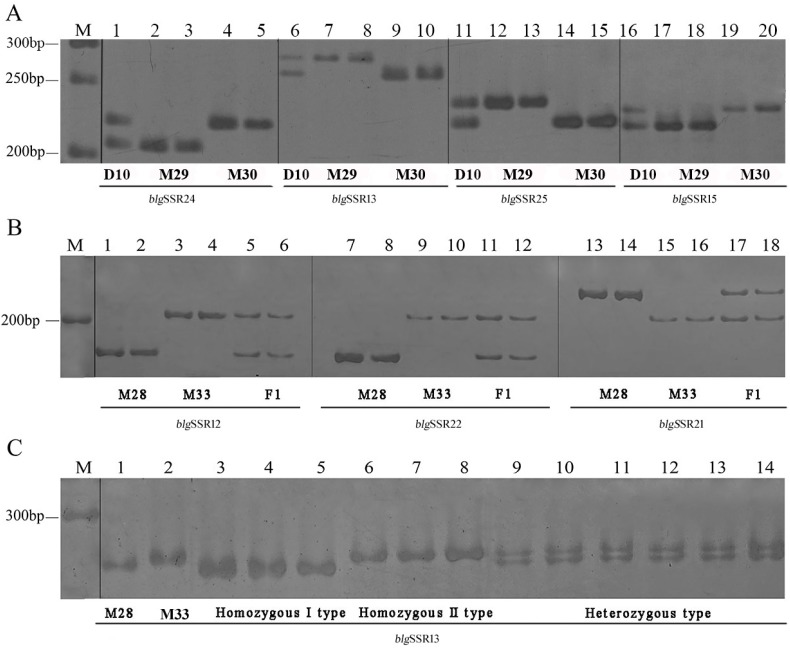Figure 2.
Examples of expressed sequence tag-simple sequence repeat markers applied in Bailinggu. (A) Polymorphic bands between monokaryons and their parent dikaryons using blgSSR24, blgSSR13, blgSSR25 and blgSSR15 (1, 6, 11, 16: parent dikaryons CCMJ973 (D10); 2–3, 7–8, 12–13, 17–18: monokaryon M29; 4–5, 9–10, 14–15, 19–20: monokaryon M30; the dikaryons CCMJ973 (D10) had two bands, while monokaryons M29 and M30 only had one band at the corresponding position); (B) polymorphic bands between the monokaryotic strains and their F1 hybrid using blgSSR12, blgSSR22 and blgSSR21 (1–2, 7–8 and 13–14: monokaryon M28; 3–4, 9–10 and 15–16: monokaryon M33; 5–6, 11–12 and 17–18: F1 hybrid; monokaryon M28 and monokaryon M33 only had one band, while their F1 hybrid was the combination of M28 and M33); (C) the monokaryotic strains and their F2 hybrid using blgSSR13 (1: monokaryon M28; 2: monokaryon M33; 3–5: F2 homozygous-like monokaryon M28; 6–8: F2 homozygous-like monokaryon M33; 9–14: F2 heterozygous).

